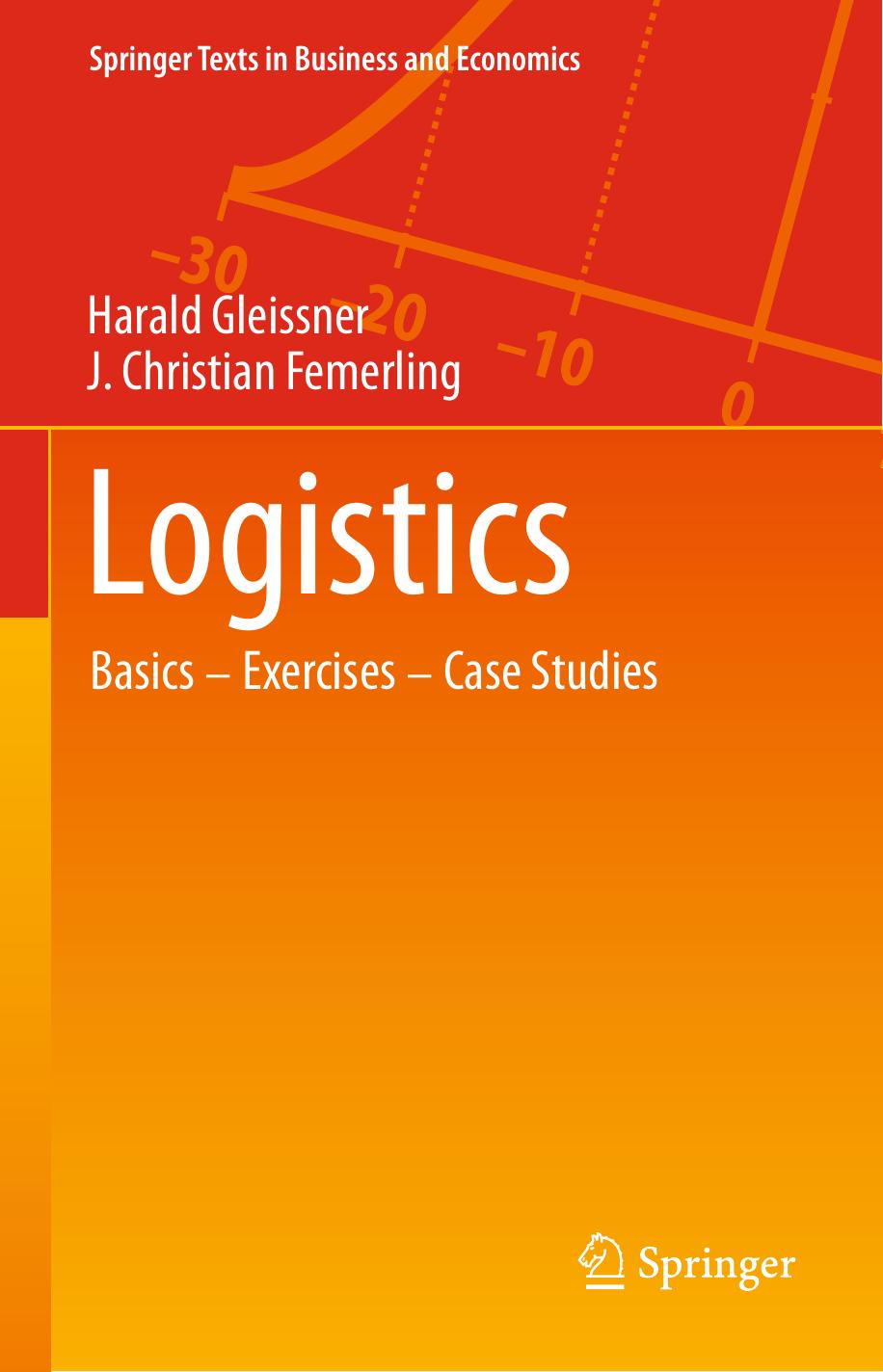Logistics by Harald Gleissner & J. Christian Femerling

Author:Harald Gleissner & J. Christian Femerling
Language: eng
Format: epub, pdf
Publisher: Springer International Publishing, Cham
Forecast delivery schedule: Stipulation of terms of delivery and period-specific obligation to take delivery
Just-in-time delivery/dispatch call-off: Specification of exact quantities, delivery dates, and points of delivery
A stable exchange of information between supplier and consignee is prerequisite for just-in-time delivery. This can be secured, for instance, through a common inventory control or by granting the purchasers access to the supplier’s order processing systems and production planning systems (PPS). Furthermore, the supplier needs to offer an extremely high service level as well as exceptional quality assurance so that the purchasers need not conduct quality checks.
Amongst other things, the selection of goods suitable for just-in-time delivery is dependent on the predictability of demand. AX, AY or BX parts are predestined for this while BY and CX parts are suitable to a certain extent (see case study 7.1). Further analyses must be carried out with regard to, for example, the composition of the parts, whether parts are used for a serial product or one variety and whether parts are to be assembled in pre-fabrication (component configuration) or in the assembly of the end product. Additionally, frequency of item changes, out-of-stock costs, as well as maximum inventory, minimum inventory, and safety stock should be taken into consideration.
Just-in-time delivery concepts can be broken down into block delivery and just-in-sequence delivery. With block delivery, the supplier receives call-offs several times per day. Following a buffering at the supplier’s site, the parts are delivered directly to the buyer’s production site. The parts are unsorted since the composition of the parts is not dependent on a specific sequence. Just-in-sequence delivery, however, is a direct delivery of small quantities transporting parts to the buyers production site several times per day and synchronously to production. Apart from the timely provisioning of parts at the point of assembly, a sequential delivery according to the sequence of assembly is taken into consideration (just-in-sequence).12
Case Study 7.2: JIT and JIS in the Automobile Industry
Based on volume and value, the VW plant Mosel procures more than 50 % of its purchased parts through JIT and JIS procedures. The responsibility of the respective suppliers comprises disposition, container management, and transport, including provisioning of the components at the point of assembly. The JIS suppliers are located at a distance of about 30 km from the plant. This makes it possible to process an order and provision the parts just-in-sequence at the assembly line within a few hours after the order was placed by the assembly department at the OEM’s site (VW).
Using this principle, the OEM reduces production costs due to short assembly and delivery times and as a result of freed-up production areas and production capacities. This type of provisioning is especially effective with modules suppliers, such as chair producers who deliver pre-finished systems (see Chap. 12). The responsibility of coordinating sub-suppliers is thus passed on to the modules supplier, which reduces the number of direct contacts. All in all, this can be regarded as a win-win situation between the OEM and the modules supplier. Long-term partnerships are forged as a result of a close cooperation.
Download
Logistics by Harald Gleissner & J. Christian Femerling.pdf
This site does not store any files on its server. We only index and link to content provided by other sites. Please contact the content providers to delete copyright contents if any and email us, we'll remove relevant links or contents immediately.
The Black Swan by Nassim Nicholas Taleb(6946)
Bad Blood by John Carreyrou(6476)
Pioneering Portfolio Management by David F. Swensen(6168)
Millionaire: The Philanderer, Gambler, and Duelist Who Invented Modern Finance by Janet Gleeson(4299)
Skin in the Game by Nassim Nicholas Taleb(4122)
The Money Culture by Michael Lewis(4025)
Bullshit Jobs by David Graeber(3991)
Skin in the Game: Hidden Asymmetries in Daily Life by Nassim Nicholas Taleb(3867)
The Wisdom of Finance by Mihir Desai(3605)
Blockchain Basics by Daniel Drescher(3429)
Liar's Poker by Michael Lewis(3322)
Fooled by Randomness: The Hidden Role of Chance in Life and in the Markets by Nassim Nicholas Taleb(2973)
The Intelligent Investor by Benjamin Graham Jason Zweig(2966)
Hands-On Machine Learning for Algorithmic Trading by Stefan Jansen(2965)
Mastering Bitcoin: Programming the Open Blockchain by Andreas M. Antonopoulos(2951)
Investing For Dummies by Eric Tyson(2833)
The Power of Broke by Daymond John(2831)
Market Wizards by Jack D. Schwager(2589)
Zero Hour by Harry S. Dent Jr. & Andrew Pancholi(2563)
